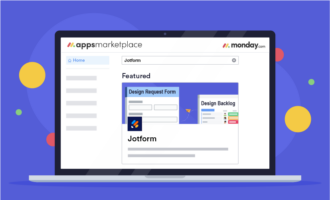A good project management communication plan can be the difference between success and a return to the drawing board. That’s not just because communication is the key to great collaboration, but because the process of developing a plan clarifies objectives, reveals disconnections, and ensures that all the stakeholders are on the same page.
“Communication becomes that focal point where everything comes together — because that’s when you’re putting it in writing,” says Patty Caballero, CEO of PSC Consulting, LLC. “You realize that we either agree on goals and processes or find our differences and deal with them.”
So how do you go about creating a project management communication plan that will drive success? Here are a few tips.
1. Set clear objectives
“The first thing you do is figure out the objective of your communication plan,” Caballero says. “A lot of people start with, ‘We need to communicate A, B, and C.’ But they need to take a step back.”
The content of your communications isn’t the actual objective of the project. It’s a means to an end. That end is your objective, and everything in your communication plan — from who does the talking to what technologies you employ — should descend from these central goals.
What do you want to accomplish with the project? And how can you use communication channels to contribute toward that broader goal? “Maybe you need to change a workflow in your business,” says Caballero. “Then that’s your objective. Maybe everybody needs workplace violence training; the objective is the training.” So your objectives are the specific goals the communication is designed to accomplish.
2. Identify all the stakeholders
With your objectives clearly mapped out, the next step is to rally the troops. It’s crucial to consider all the departments, teams, and individuals to include in this project’s chain of communication. Leave a stakeholder out of your communication plan, and you can create confusion, mistrust, and even potential failure.
“Maybe you’re changing a workflow that will impact legal, procurement, and finance,” Caballero says. “We need to inform all the different departments that will be impacted. We need to communicate how the change is going to happen and what it means to them.” That starts with a complete list of participants.
3. Assign messages to the appropriate information source
You’ve heard the saying, “Check your sources.” It’s good advice when you’re creating a project management communication plan. Who delivers a message is almost as important as how they do so.
“There are some messages that are important for the CEO to deliver,” says Caballero. “And there are others that are more important for human resources, the head of sales, or somebody else to deliver. So you have to ask, ‘Who is that authentic person who will be the best face of the message?’ ”
4. Choose the communication channels and technologies that work for each stakeholder
“The channels and tactics you use to communicate will depend on the people you’re trying to reach,” Caballero says. Not only do people have different learning styles; they also have different levels of access to communications channels — and, these days, they’re less likely than ever to be physically together in the same office. Location will affect your communication plan, too.
“Some employees may be sitting at desks, while others may work on the factory floor and only get communications when they go into the break room,” Caballero says. “So you need to think about how to deliver the message in various ways.”
That means making use of multiple communication technologies: email, phones, webinars, instant messaging, physical signs, videos, and online forms for feedback and review (more on that later).
5. Measure the results of your project management communication plan
Finally, a communication plan needs to incorporate measurement procedures to ensure that you’re driving continually toward accomplishing the objectives you identified in step one. That measurement can be quantitative — for instance, the level of engagement you get for a certain email — but getting qualitative data from participants is also an important part of keeping the project on track.
6. Use stakeholder surveys to improve project management communication plans
When you continually measure the results of your communications, you can address any problems before they negatively affect the project as a whole. Employee feedback on the process is a crucial part of testing and improving any communication plan — and online staff surveys are a great way to collect this vital information.
“Employee surveys are a big way to measure changes and the ways employees feel about those changes,” Caballero says. Stakeholder feedback is crucial for identifying necessary changes to communication plans — both before and after rollout.
Jotform makes it easy to customize feedback forms to match your project management communication plan. Start with a template — like this employee feedback form, this workplace survey, or one of our more than 300 feedback surveys — and edit it to match your feedback goals. Or build your own measurement form with Jotform’s user-friendly drag-and-drop Form Builder.
Finally, remember that any project management communication plan is a work in progress. Use the results from your measurement forms to continually improve communication between all stakeholders; with better communication, workplace projects get better results.





























Send Comment: